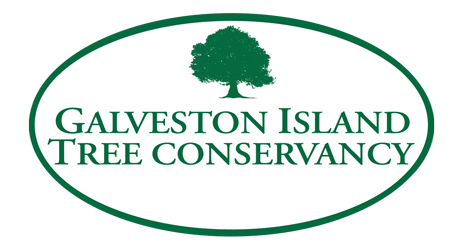Galveston Champion
Tree Stories: We have a Champion
Galveston is the proud home of a Texas champion tree, the Podocarpus macrophyllus, more familiarly the Japanese yew in the garden of Grace Episcopal Church at 36th Street & Avenue L. It is the largest of these in the state at 32 feet tall and 99 inches in diameter, with a crown spread of 37 feet. You can find it online in the Texas Big Tree Registry (http://texasforestservice.tamu.edu/TexasBigTreeRegistry/). The tree’s age is uncertain, but it may have been there for over 100 years. None of the numerous yews in local landscapes are as grand as this beauty.
A native of Japan or Southern China, yew is a popular large shrub or small tree in gardens there and also in the southeastern United States. It is often known incorrectly as Buddhist Pine or Fern Pine. It is actually a conifer, more closely related to cedars and cypresses.
The yew is a good fit for Galveston’s environment and climate. It can adapt to many soil types, can handle drought once established, tolerates salt spray, and withstands heat. It enjoys sun but can thrive in shade. This durable plant is usually pest and disease free.
This small to medium size tree has a slow to moderate growth rate. If left to grow undisturbed, as our champion has been, it can reach 30-50 feet in height. Dark green flat, narrow leaves, around three inches long, are present year-round. Male plants produce pollen with Catkin-like structures, called cones. Inconspicuous flowers on female plants are followed by small purple fruits which are not too messy on sidewalks. Various reports that the fruits are toxic to humans means we should best leave them for the birds, who find them quite desirable.
The tree is adaptable to a variety of landscape uses. Yew takes shaping well and for smaller spaces may be trimmed as desired and can even be maintained as a topiary specimen. It is popular as a dense screen or hedge as the foliage on lower limbs will grow to reach the ground if untrimmed. When grown as a tall tree with lower branches removed, the light brown, peeling bark is attractive. An unsculpted yew develops in an open manner with large spaces between the branches creating an irregular oval silhouette in maturity.
Yews are useful as well as attractive. Cut foliage is added to flower arrangements and can last for a long time. It is highly regarded as a feng shui tree in Hong Kong, giving it a high market value and inspiring illegal digging there. Because of its resistance to termites and water, it is used for quality wooden houses in parts of Japan. And remember the fruits are good bird food!
Want your own yew? You can find one in the nursery trade or grow your own. It can be propagated using hardwood cuttings. Seeds may take two years to germinate but volunteer seedlings often appear in the shade of well mulched female individuals and can be transplanted. Just ask before you dig!
“Tree Stories” is an ongoing series of articles about Island trees, tree care, and tree issues. If you have or know of a special tree on Galveston Island that should be highlighted, please email treesforgalveston@gmail.com. Margaret Canavan is a Galveston resident, a Galveston County Master Gardener, and a member of the Galveston Island Tree Conservancy Board.
Hurricane Ike caused the loss of 40,000 trees on Galveston Island. The Galveston Island Tree Conservancy was formed to address that loss and has replaced over 15,000 through grant-funded plantings and giveaways.


